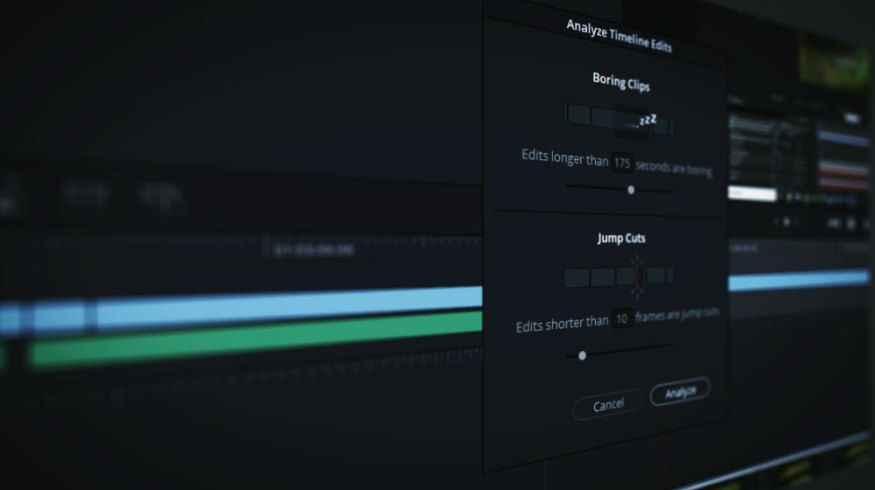
DaVinci Resolve’s Boring Detector — Offensive or Misunderstood?
Let’s discuss the usefulness of the Boring Detector for the up-and-coming editor — as well as how and why it is sometimes ineffective.
Earlier this year, during one of Blackmagic’s many exciting announcements (there have been a few), we learned about a new DaVinci Resolve feature called the Boring Detector. Of course, and I guess somewhat warranted because of the name of the tool, there was an initial social media backlash to the announcement. Art is subjective and, outside of distinct edit points and shots, filmed purposely to cut to a reaction. Who’s to say that a shot is too long? Especially when that criticism is coming from a software algorithm. Popular editor Vashi Nedomansky, ACE, who often shares invaluable editing advice (and also runs a blog that offers a variety of excellent Premiere Pro downloads), had a popular reaction to the summer announcement.
Understandably, I can see why editors were a little enraged. However, I also think the Boring Detector shouldn’t be an issue at all. Resolve isn’t forcing anybody to use the Boring Detector tool, and the tool is only on the cut page. While DaVinci initially presented the page as a way for editors on-the-go to edit quickly, I see it has been adopted more by new users to the platform, or those new to editing in general and find the dedicated editing page too much of a jump into the deep end. Therefore, I don’t see this tool as something editors will use for determining where their film drops off in audience retention. I see it as a tool to help those without proficiency in editing.
So, What Does the Detector Do, and How Can You Use It?
At its core, the Boring Detector will analyze your clips on the timeline (Cut Page only) and inform you of areas that are either too long or too short. So, it’s not necessarily telling you that this particular moment is boring but, instead, that it’s too longspun. And here’s the thing: this is entirely user-defined.
On the Cut Page, you can find the Boring Detector button just under the media pool. Upon clicking it, you’ll see two options.
- To find edits longer than [user defined] seconds.
- To find edits shorter than [user defined] frames.
The analysis is based on the user’s input. It has little to do with the software scanning through your edit to find shots and moments that it thinks is boring. The clips that have been deemed too long will show on the upper timeline as a grey highlight (red for the jump cuts).
Quite simply, that’s all the Boring Detector is. I find it inherently hard to briefly cover a feature or new gear, and often see myself waddling into a word count in the thousands, which really should have been a quick read, but there’s not a lot to say about this function. Resolve will tell you if a shot is too long or too short based on the user’s definition.
To some extent, I like to look at it as a formatting assistant, similar to what you find in Final Draft’s scriptwriting software. Now, I have no intention of ever using this feature, and in fact, I’ve hidden the Cut Page from my display, as it’s a Resolve page I have no use for. That said, I can see the benefit of its use for those who are completely new to editing and would like a little help getting started. Perhaps someone new to filmmaking has read in a book that a cut should last no longer than fifteen seconds. Using that information, they can ask Resolve to highlight and receive an on-the-fly analysis of the shots that trail on longer than desired.
I think that the icon and the name of the function are too on-the-nose, which obviously sparked the initial negative discourse. But then again, “Shot Length Analyzer” isn’t as engaging.
Looking for more on DaVinci Resolve? Check out these articles.








